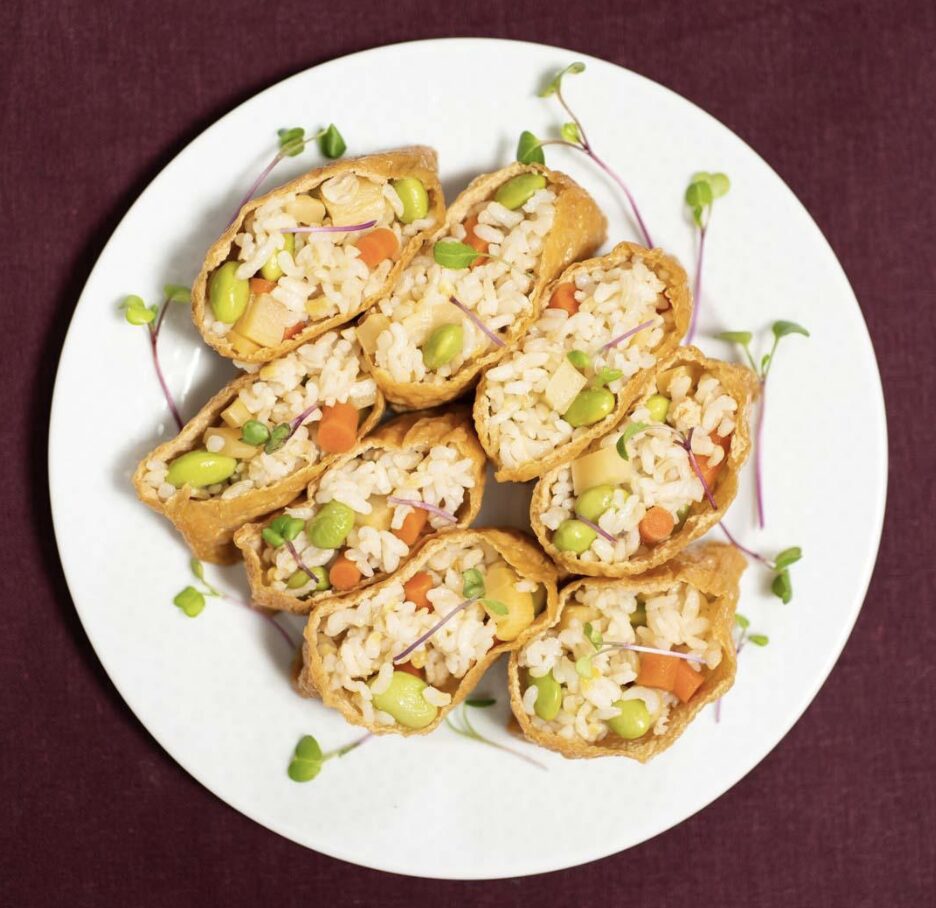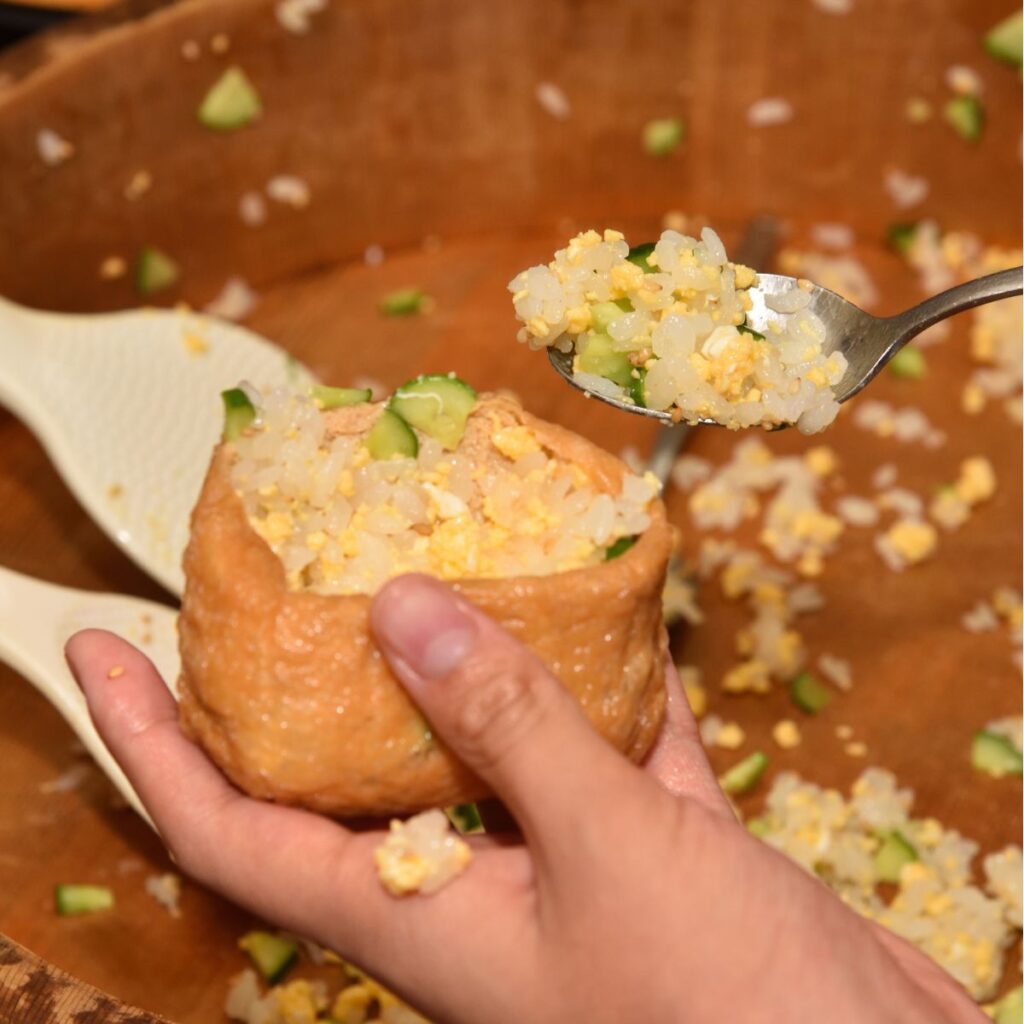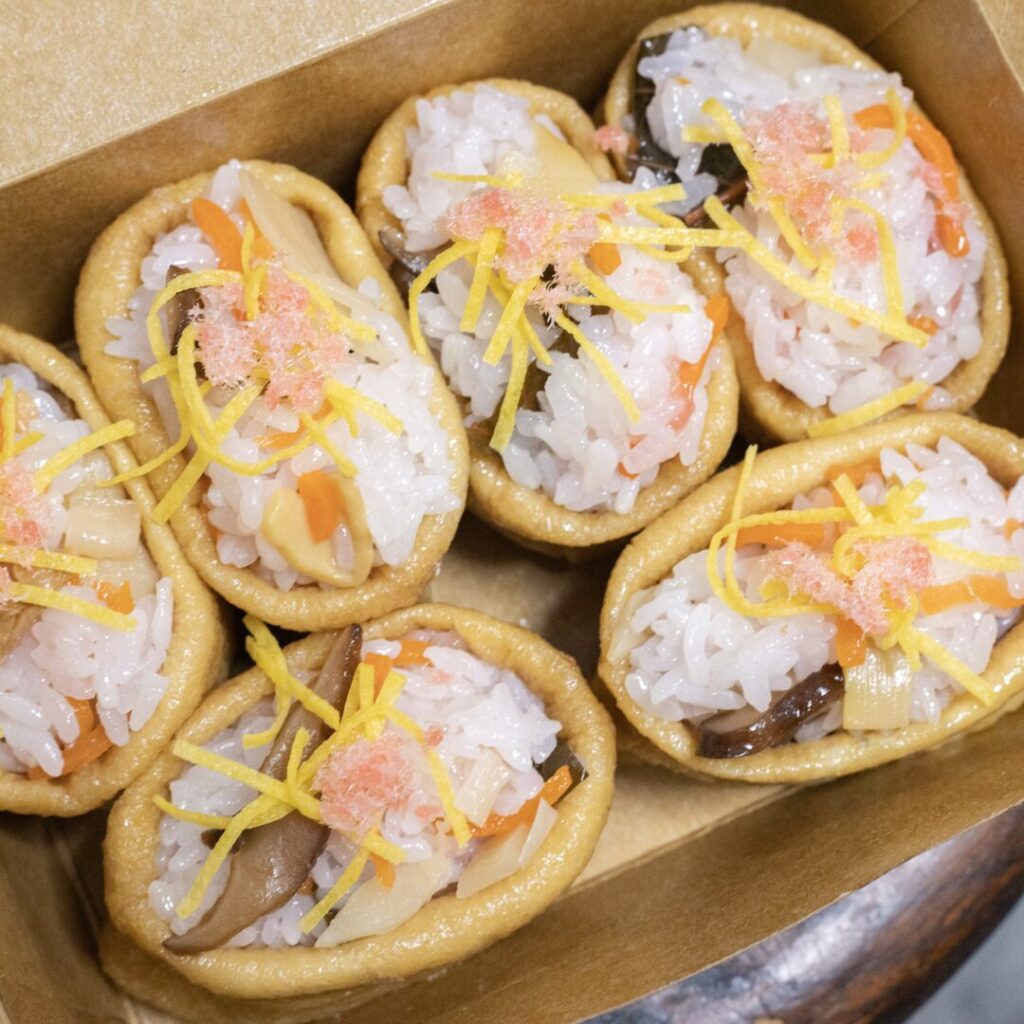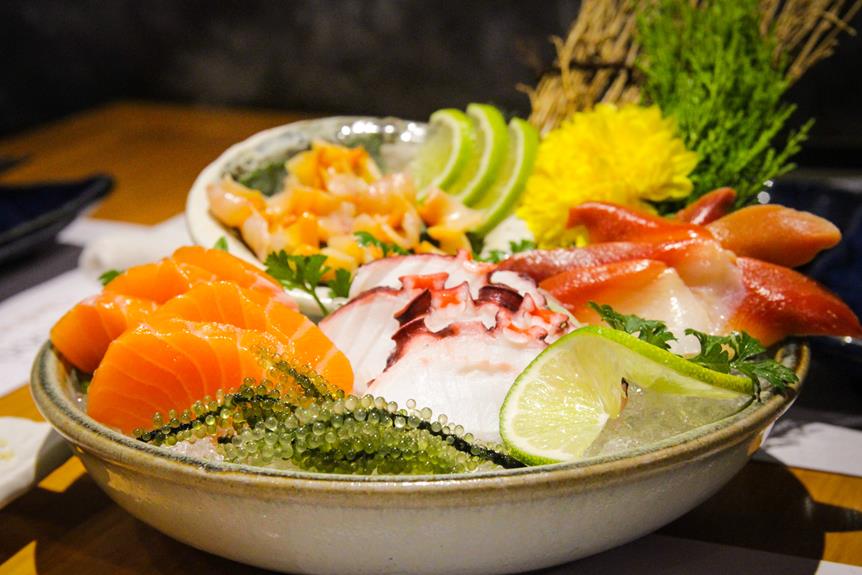Introduction
Inarizushi, a beloved gem in the treasure trove of Japanese cuisine, is a sushi that captures the imagination with its simplicity and flavor. Named after the Shinto god Inari, associated with fertility, rice, and foxes, these delightful sushi pockets are said to be the favorite food of foxes, Inari’s messengers. My own love for Inarizushi began in the bustling streets of Osaka, where I first tasted these sweet and savory pockets, a flavor that instantly felt like a warm embrace.


Cultural Context
Inarizushi has a special place during Hinamatsuri (Girls’ Day) and other celebrations, symbolizing prosperity and good fortune. The golden-brown tofu pouches represent the bountiful harvest of rice, and their pocket-like shape is thought to hold luck and wealth. This dish is a festive staple, often found in bento boxes or at picnics under cherry blossoms.
Health Benefits
Inarizushi is not only delicious but also nutritious. Brown rice is rich in fiber and B-vitamins, while the tofu pouches provide soy protein. The pickled vegetables contribute probiotics, beneficial for gut health.
Ingredient Spotlight
The essence of Inarizushi lies in its few but pivotal ingredients:
Brown rice (genmai), a healthier alternative to white rice, brings a nutty flavor and chewy texture.
Konbu, a type of seaweed, infuses umami into the rice.
Inari, fried tofu pouches, offer a sweet and savory casing for the rice.
Pickled vegetables like takuan and gobo add crunch and tang, while edamame provides a pop of color and protein.
Modern variations might include quinoa or other grains mixed with the rice for added nutrition.


Ingredients
For the sushi rice (shari)
- 2 cups brown rice
- Small piece of konbu ~ 2 x 2in.
For seasoning the rice
- bottled sushi vinegar (recommend finding one with sugar instead of corn syrup if possible)
If you want to make it from scratch –
- 3 Tbsp rice vinegar
- 2 Tbsp sugar
- 1 tsp salt
For the vegetables
- 1 package of inari (fried and marinated tofu pouches – these vary in size, but 1 pocket fits about ¼ cup in volume)
- ½ cup of takuan, cubed (pickled daikon radish)
- ½ cup of pickled gobo, cubed (burdock root)
- ½ cup of edamame (boiled in salted water and deshelled)
For serving
- Optional: wasabi, kaiware daikon (radish sprouts), nori (dried seaweed strips), pickled ginger
toasted sesame seeds
Instructions
For the sushi rice (shari)
- For the sushi rice, first cook in rice maker as you normally would, but with a piece of konbu (which helps improve the flavor).
- Meanwhile, mix the rice vinegar, salt and sugar and set aside.
- Once the rice is done, gently folder in the sushi rice seasoning.
- Allow to cool to room temperature and mix in the cubed vegetables.



Konnichiwa! (Hello!) I'm Pat Tokuyama, a Japanese tofu cookbook author, who travels for music, food, and adventure. If you like Japanese tea, checkout some of the newestorganic japanese tea, matcha bowls and noren and more!
** Curious about the Plant Based Japanese Cooking Club? ** Learn more here!
To assemble the inarizushi
- Using wet hands, gently squeeze the marinade out of the pouches (unless you like it juicy).
- Then use a spoon or fork to fill each pocket until mostly full.
- Holding the stuff pocked in one hand, press the rice filling down firmly with the other so that it’s flush with the edges of the pocket.
- Repeat until all pockets have been used.
Cooking Tips
- For the vegetables, if you can’t find pickled gobo use cubed carrots (boiled, drained and soaked in rice vinegar for at least 20 minutes). Another good one is cubed bell pepper (red, yellow, and orange), with which you can again soak in rice vinegar for about 20 minutes. For the green color you can use green peas, sugar snap peas, and avocado!
- The inarizushi marinade (juice the tofu pockets come in) is full of flavor. If you’d like to use it, you can add some to the rice and see if you like the additional flavor
Serving Suggestions
Inarizushi is best served at room temperature, making it ideal for picnics and parties. Accompany it with wasabi, kaiware daikon, nori strips, and pickled ginger for a complete sushi experience.
Variations
Feel free to customize Inarizushi by:
- Adding furikake or toasted sesame seeds for extra flavor and crunch.
- Filling the tofu pouches with a mixture of rice and finely chopped mushrooms or tuna for a non-vegetarian twist.
Conclusion
Inarizushi is a dish that invites creativity and celebrates the joy of Japanese culinary traditions. I encourage you to try making it at home, share your creations, and explore new variations. Let’s fill our tables and hearts with these delightful pockets of happiness.








Konnichiwa! (Hello!) I'm Pat Tokuyama, a Japanese tofu cookbook author, who travels for music, food, and adventure. If you like Japanese tea, checkout some of the newestorganic japanese tea, matcha bowls and noren and more!
** Curious about the Plant Based Japanese Cooking Club? ** Learn more here!